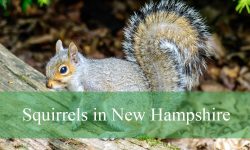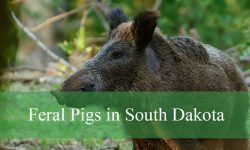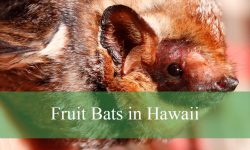If you ever wander through the peaceful parks of southern Illinois, you might spot something that makes you blink twice — a pure white squirrel darting up a tree. At first glance, it almost looks like a snowflake come to life. These ghostly creatures stand out against the green and brown backdrop of Illinois woodlands, and they’ve been turning heads for more than a century.
In the quiet city of Olney, Illinois, white squirrels aren’t just a rare curiosity; they’re local celebrities. Residents take pride in their presence, and visitors from around the country travel just to catch a glimpse. The town even conducts yearly population counts to make sure these pale beauties are doing well.
But how did this all start? Why do white squirrels exist in the first place, and why are they so common in this one Illinois town? Let’s explore the fascinating mix of genetics, history, and human protection that keeps this unusual population thriving.
The Origin Story of Illinois’ White Squirrels

The tale of Illinois’ white squirrels goes back to the early 1900s. Historical reports suggest the first sightings happened near Olney, a small community surrounded by hardwood forests and farmland. Over the decades, locals began to notice more and more of these unusual white-furred squirrels appearing in their neighborhoods.
Researchers later discovered that these squirrels weren’t albino as many assumed — they were mostly leucistic. That means they have a genetic mutation that reduces pigment in their fur but doesn’t affect their eye color. Albino squirrels have red or pink eyes, but the white squirrels of Olney have dark ones, proving a different genetic cause.
This mutation is recessive, so it only shows up when both parent squirrels carry the gene. Over time, the combination of this genetic rarity and the town’s protective efforts allowed the white squirrel population to grow and remain stable.
Olney, Illinois — The White Squirrel Capital of the World
While other states occasionally report white squirrel sightings, none have embraced them like Olney. The town proudly calls itself the “White Squirrel Capital of the World,” and it’s easy to see why. White squirrel signs, murals, and even sculptures decorate the streets, and the local police patch features the animal as a mascot.
Olney’s relationship with its white squirrels runs deep. In fact, it’s illegal to harm or capture one within city limits. Each fall, volunteers and local officials conduct a white squirrel census, counting how many of these rare creatures remain. The data helps track population changes and ensures the squirrels stay healthy.
Thanks to this long-standing care and attention, Olney’s white squirrel population has become a symbol of both pride and preservation — a rare example of how a small town can protect and celebrate its natural wonders.
The Science Behind Their White Coats
So what makes these squirrels white in the first place? It all comes down to genetics. The color difference is caused by a recessive gene — meaning a squirrel needs to inherit it from both parents to appear white. If it only gets one copy, the squirrel will be gray.
This helps explain why white squirrels remain rare even in places like Olney. The gene has to keep circulating in the population through generations, and since gray squirrels are far more common, the white trait doesn’t always show up.
In the wild, a white coat might seem like a disadvantage — it can make an animal more visible to predators. But in Olney, where there are few natural threats and plenty of human protection, this trait has survived beautifully.
Leucism vs. Albinism — What’s the Real Difference?
One of the most common questions people ask is whether these white squirrels are albino. The answer? Usually not. Albino animals lack all pigment, which makes their eyes appear pink or red. This happens because the absence of melanin reveals the color of blood vessels beneath.
Leucistic squirrels, on the other hand, only have a partial loss of pigment. Their fur turns white, but their eyes remain dark. That’s why when you look closely at Olney’s famous squirrels, you’ll notice black or brown eyes — a telltale sign of leucism, not albinism.
In fact, researchers estimate that over 90% of Illinois’ white squirrels are leucistic, not albino. It’s a subtle but important distinction that explains both their look and why they’ve managed to thrive for so long.
Where White Squirrels Live and How They Behave
Despite their unusual color, Illinois’ white squirrels behave just like any other gray squirrel. They’re active during the day, curious by nature, and excellent climbers. You’ll find them darting up oak and hickory trees, collecting nuts, or chasing one another across lawns and park benches.
Their diet includes acorns, seeds, buds, fruits, and the occasional insect. They build nests high in trees using twigs and leaves, creating cozy spots to raise their young. White squirrels are also known for their playful behavior and agility — qualities that make them especially fun to watch.
In Olney, their favorite hangouts include city parks, tree-lined streets, and quiet neighborhoods where residents often leave out food. Thanks to this mix of urban and natural habitat, the squirrels have everything they need to thrive year-round.
White Squirrels Beyond Illinois
Although Olney is the most famous home of white squirrels, it’s not the only one. Similar populations exist in Kentucky, Tennessee, and North Carolina, though they’re much smaller. Each area’s squirrels carry slightly different genetic origins — some are leucistic, others are true albinos.
Still, Olney stands out for one big reason: its community-wide commitment to protecting these animals. No other town has maintained such consistent monitoring, local laws, and public awareness. That’s why Illinois continues to be recognized as the true heart of America’s white squirrel story.
These other populations show that the mutation isn’t unique to one place — it’s nature’s way of reminding us how diverse and unpredictable genetics can be.
A Source of Local Pride and Culture
In Olney, the white squirrel isn’t just a local animal; it’s part of the town’s soul. You’ll see their image everywhere — from school mascots to gift shop souvenirs. Every October, Olney hosts the White Squirrel Festival, a weekend event filled with parades, food, music, and wildlife education.
The festival celebrates not only the town’s rare residents but also the spirit of conservation. Visitors come from across the country, turning this small Illinois town into a temporary wildlife hotspot. For locals, it’s a reminder of the unique piece of nature they’ve vowed to protect.
Generations of Olney families have grown up with white squirrels in their backyards. For them, these animals represent both a living link to their history and a symbol of how humans can live in harmony with wildlife.
Science and Conservation in Action
What makes Olney’s white squirrel population so valuable to scientists is its stability and long record of study. Researchers have been collecting data for decades, tracking how genetics, environment, and community efforts affect population survival.
This long-term project offers insights into how recessive traits persist in isolated populations — and how urban wildlife can adapt successfully when humans protect them. The local white squirrel census, conducted each year, is a model example of citizen science in action.
Beyond genetics, the town’s approach to conservation shows what’s possible when people care deeply about their natural surroundings. It’s not just about protecting squirrels — it’s about preserving biodiversity in a way that benefits the whole ecosystem.
The Mystery That Keeps People Fascinated
Even after years of study, there’s still something enchanting about the white squirrels of Illinois. Why did this particular genetic mutation survive so well here? Why does Olney have such a strong concentration compared to other regions?
Scientists have theories — from reduced predation to human protection — but the full answer remains uncertain. What’s clear, though, is that these animals capture people’s imaginations like few others. They remind us that nature is full of surprises, even in our own backyards.
Every time someone spots a flash of white in the trees, it reignites that same sense of wonder — the feeling that we’ve stumbled upon something rare, beautiful, and almost magical.
White Squirrels and Tourism in Olney
Tourism is a big part of the white squirrel story. Visitors come from all over to see them up close, and Olney welcomes them with open arms. The local Chamber of Commerce even provides maps to popular viewing areas, helping travelers plan their perfect squirrel-spotting trip.
Businesses have embraced the trend, too. Cafes sell white squirrel mugs, bakeries decorate cookies with their likeness, and you’ll even find a few white squirrel murals around town. What started as a scientific curiosity has become a full-fledged part of local tourism.
Best of all, the increased attention helps fund and sustain the very conservation efforts that protect the squirrels. It’s a rare example of tourism directly supporting wildlife preservation.
Community Education and Awareness
Education has played a massive role in keeping Olney’s white squirrel population safe. Local schools teach students about the town’s natural history, while community organizations run programs to raise awareness about coexistence with wildlife.
Residents are encouraged not to interfere with nests, to drive carefully through squirrel-heavy areas, and to report sightings for the annual census. This cooperative effort between citizens and conservationists is what truly makes Olney stand out.
It’s proof that protecting wildlife doesn’t always require big government programs or huge budgets — sometimes, all it takes is a dedicated community that cares enough to make a difference.
FAQs About White Squirrels in Illinois
Are all white squirrels in Illinois albino?
No. Most are leucistic, meaning they have white fur but normal-colored eyes. True albino squirrels with pink eyes are extremely rare.
Where can you see white squirrels in Illinois?
Your best chance is in Olney, located in southeastern Illinois. The squirrels often roam parks, residential streets, and the downtown area.
Are they protected by law?
Yes. It’s illegal to harm or capture a white squirrel in Olney. The city takes their protection seriously and enforces these rules year-round.
How many white squirrels live in Olney?
Population counts vary, but typically between 100 and 200 individuals call Olney home, coexisting with a much larger population of gray squirrels.
What makes their color white?
Their color comes from a recessive leucistic gene that reduces pigment in their fur, not from albinism.
Conclusion
The story of Illinois’ white squirrels is more than a tale of rare genetics — it’s about a small town’s love for its wildlife. Through decades of dedication, Olney has turned a local curiosity into a living symbol of community pride and environmental stewardship.
These squirrels remind us that wonder doesn’t just live in remote jungles or mountain ranges. Sometimes, it’s right in the heart of America — in the flutter of a white tail against green leaves, or the leap of a bright squirrel across a quiet Illinois park.
In a world that often forgets the value of small natural miracles, Olney’s white squirrels stand as a shining example of what can happen when people choose to protect, rather than ignore, the mysteries that nature gives us.






